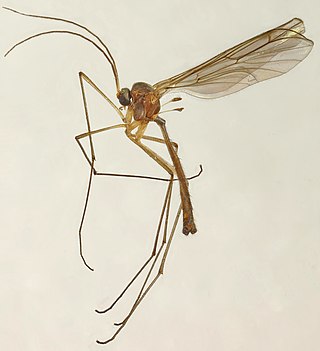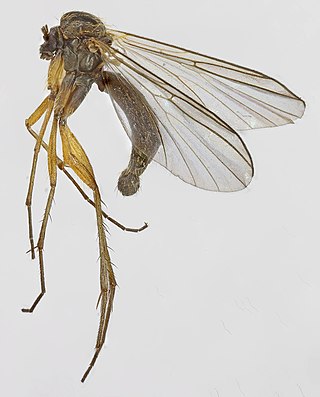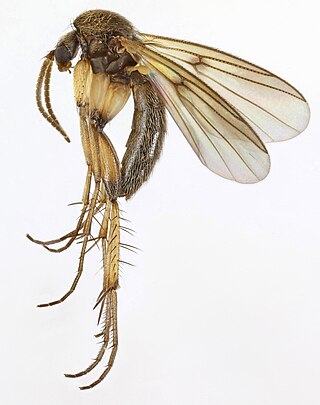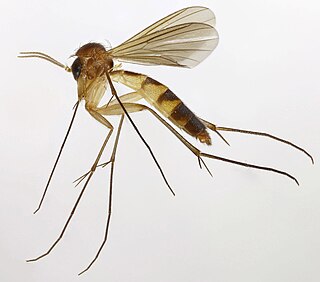
The Nematocera are a suborder of elongated flies with thin, segmented antennae and mostly aquatic larvae. This group is paraphyletic and contains all flies but species from suborder Brachycera, which includes more commonly known species such as the housefly or the common fruit fly. The equivalent clade to Nematocera is the whole Diptera, with Brachycera as a subclade. Families in Nematocera include mosquitoes, crane flies, gnats, black flies, and multiple families commonly known as midges. The Nematocera typically have fairly long, fine, finely-jointed antennae. In many species, such as most mosquitoes, the female antennae are more or less threadlike, but the males have spectacularly plumose antennae.

Mycetophilidae is a family of small flies, forming the bulk of those species known as fungus gnats. About 3000 described species are placed in 150 genera, but the true number of species is undoubtedly much higher. They are generally found in the damp habitats favoured by their host fungi and sometimes form dense swarms.

Bolitophila is the sole living genus in the Bolitophilidae, a family of Diptera in the superfamily Sciaroidea, with around 40 Palaearctic and about 20 Nearctic species, and three species from the Oriental region (Taiwan). They are small (6–9 mm).

The Ditomyiidae are a small family of flies (Diptera).They are found worldwide, most species are found in the Australasian and Neotropical realms. There are only two genera in Europe Ditomyia Winnertz, 1846 and Symmerus Walker, 1848 Ditomyia is found in Central Europe Symmerus in Northern Europe Symmerus is endemic to the Palaearctic.

Leptomorphus is a genus of fungus gnats in the family Mycetophilidae. There are about 8 described species in Leptomorphus.

Boletina is a genus of fungus gnats in the family Mycetophilidae. There are at least 30 described species in Boletina.

Zygomyia is a genus of fungus gnats in the family Mycetophilidae. There are at least 80 described species in Zygomyia.
Eudicrana is a genus of fungus gnats in the family Mycetophilidae. There are about 13 described species in Eudicrana.
Lygistorrhina is a genus of long-beaked fungus gnats in the family Lygistorrhinidae. There are at least 20 described species in Lygistorrhina.
Symmerus vockerothi is a species of non-brachycera in the family Ditomyiidae.
Monoclona is a genus of fungus gnats in the family Mycetophilidae. There are about 18 described species in Monoclona.
Ectrepesthoneura is a genus of fungus gnats in the family Mycetophilidae. There are more than 20 described species in Ectrepesthoneura.

Gnoriste is a genus of fungus gnats in the family Mycetophilidae. There are about 13 described species in Gnoriste.

Ditomyia is a genus of fungus gnats in the family Ditomyiidae.
Asioditomyia is a genus of fungus gnats in the family Ditomyiidae.
Australosymmerus is a genus of fungus gnats in the family Ditomyiidae.

Exechiopsis is a genus of fungus gnats in the family Mycetophilidae.

Allodiopsis is a genus of fungus gnats belonging to the family Mycetophilidae.











